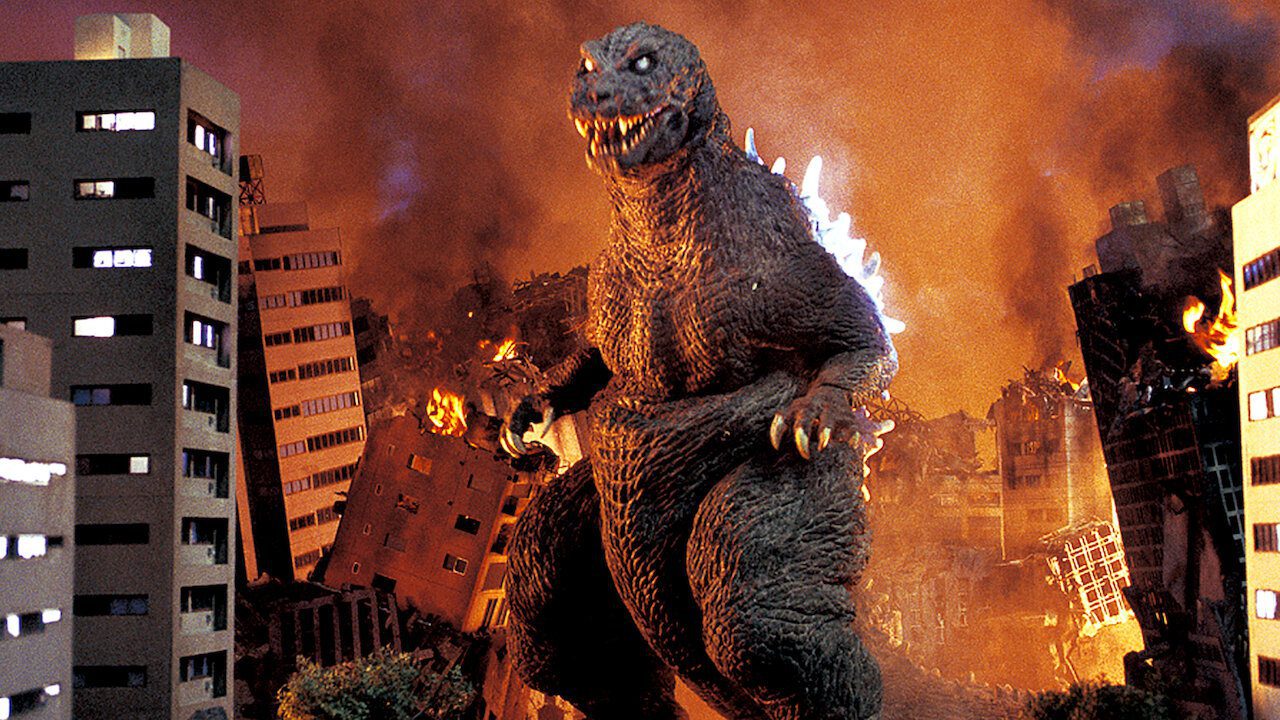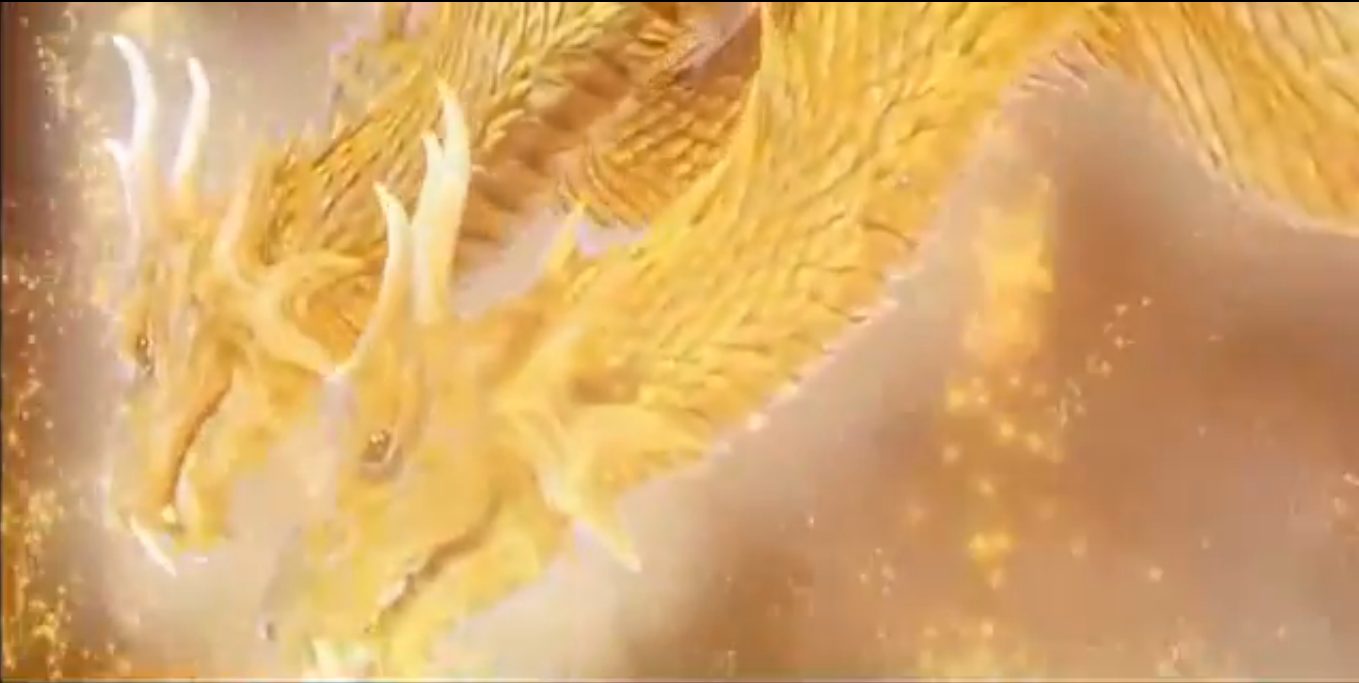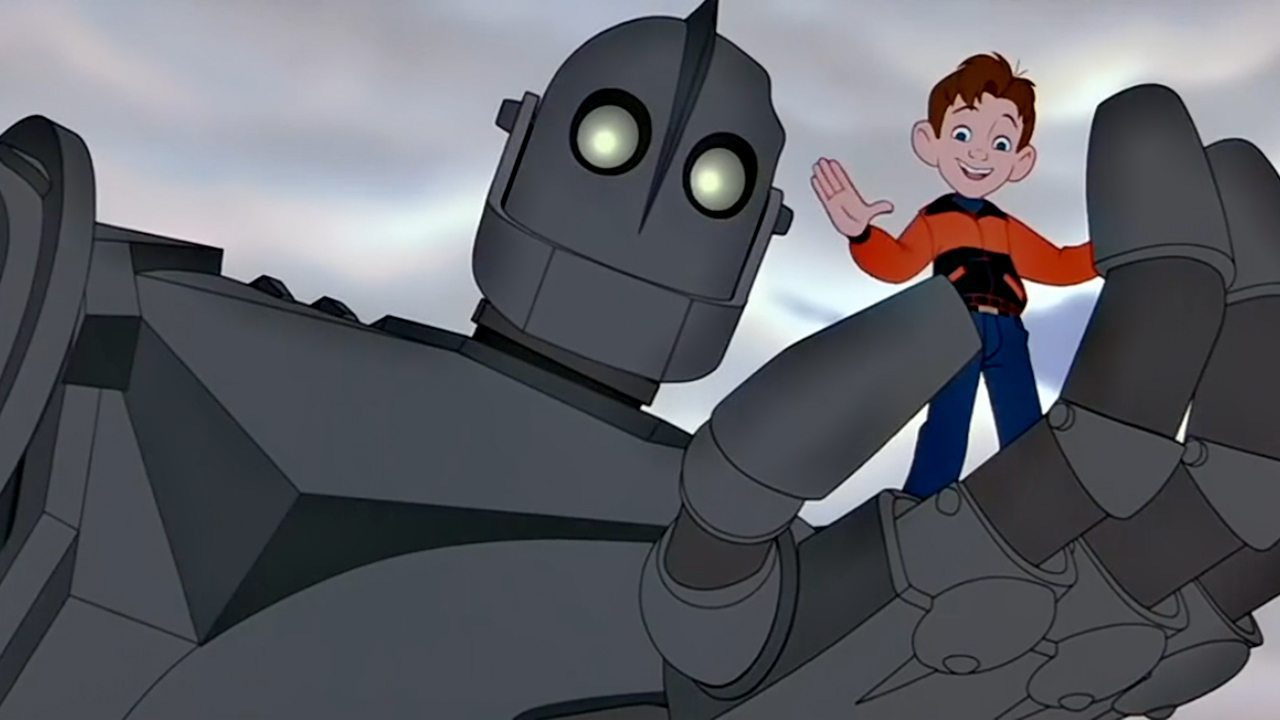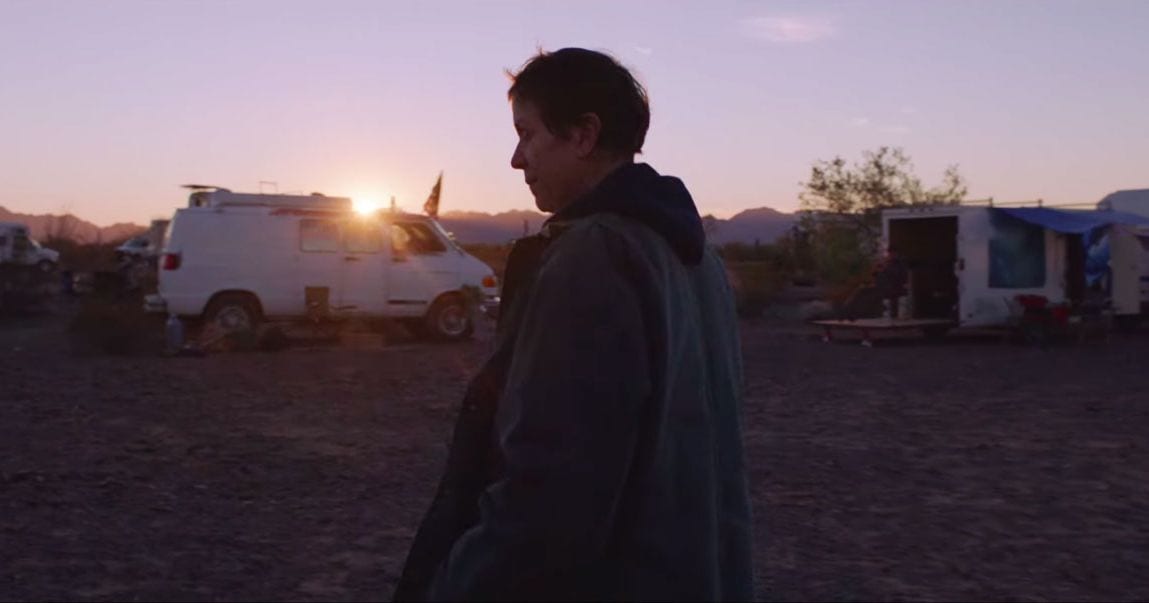
Admiral Taizo Tachibana (Ryudo Uzaki) receives word that an American submarine has gone missing.??A rescue team spots a giant creature with glowing dorsal spines swimming away from the wreckage.
While filming a TV program near Mount Myoko, Niigata, Yuri Tachibana (Chiharu Niiyama), Admiral Tachibana?s daughter, experiences an earthquake and sees a mysterious man who quickly disappears. That night, a motorcycle gang is buried in a tunnel collapse in the same area and the only witness, a trucker, claims he saw Godzilla do it. Yuri?s co-worker, Teruaki Tekeda (Masahiro Kobayashi), brings her a book about some legendary guardian monsters. One of the monsters in the book, Baragon, aligns with the incidents at Mount Myoko.
At Lake Ikeda, several youths are found dead and wrapped in silk. While investigating, Yuri and her crew find the mysterious man she saw near Mount Myoko in jail, Professor Hirotoshi Isayama (Hideyo Amamoto), and he warns them Godzilla is coming back.
In a forest, a man trying to hang himself finds a giant three-headed dragon sleeping underground. While the man is reporting his discovery to the police, Baragon soon breaks out of the ground and frees Professor Isayama from jail. Shortly after, Godzilla surfaces at Yaizu. Baragon and Godzilla eventually meet at Gotemba, where Godzilla easily kills the much smaller Baragon.

A giant cocoon is found at Lake Ikeda, which hatches into the adult Mothra. Ghidorah also emerges from the ground in Aokigahara. With all the monsters converging on Yokohama, the JSDF is dispatched to the city, including Admiral Tachibana.
After a hard-fought battle, Godzilla defeats Mothra and many of the JSDF troops. Godzilla is wounded in the battle, and as he continues to fight Ghidorah, Admiral Tachibana takes a minisub loaded with a boring missile to face Godzilla himself.
Godzilla, Mothra and King Ghidorah: Giant-Monsters All-Out Attack (or GMK for short) is a very noticeable step up from the last two Godzilla movies and a look behind the scenes reveals why. Shusuke Kaneko, the man behind the spectacular Heisei Gamera trilogy, was finally given his chance to direct a Godzilla film. Though GMK doesn?t quite reach the heights of Kaneko?s Gamera 3: Revenge of Iris, it is easily the best Godzilla film of the Millennium Godzilla series. Composer Kow Otani, who had scored Kaneko?s Gamera films, also joins the crew behind the scenes, bringing with him a very unique musical sound for a Godzilla film. On screen, Yukijiro Hotaru, who portrayed the easily frightened Inspector Tsutomu Osako in the Heisei Gamera trilogy, also makes an appearance in GMK as the suicidal man in Aokigahara, and Mizuho Yoshida, who portrayed the Queen Legion in Gamera 2: Attack of Legion (1996), plays Godzilla.

GMK is a direct sequel to Godzilla (1954), and it returns Godzilla to a serious threat to the nation. Godzilla deliberately kills people in this movie, blasting them with his atomic breath or pushing mountains down on top of them. The monster also gets a bit of a new origin. Rather than just being a giant mutation created by nuclear testing, this version of Godzilla also contains the souls of those killed in Asia during World War II who are angry at the people of Japan for having forgotten what the nation did during that conflict. In keeping with his new personality and origin, Godzilla is given a redesign, with more rounded dorsal spines than the previous suits and solid white eyes.
The monster Baragon first appeared in Frankenstein Conquers the World (1965) and GMK is his first appearance in a film since his small cameo in Destroy All Monsters (1968). Interestingly, Baragon is portrayed by Rie Ota, making him the first monster in a Godzilla film to be portrayed by a female suit actor. Baragon no longer has a ray weapon and his colour is changed to red instead of brown, but otherwise isn?t altered all that much from his Showa era appearances.
Unlike Baragon, Mothra and Ghidorah are changed quite a bit. Mothra is given a more wasp-like appearance and no longer comes from a remote island with tiny fairies to mediate between her and humanity. For the first time, King Ghidorah is smaller than Godzilla and is a hero rather than a threat. Intially Kaneko?s plan was to feature Baragon, Anguirus, and Varan, but Toho wanted Mothra and Ghidorah in the movie instead, so Varan and Anguirus were dropped, and it seems like these changes to Mothra and Ghidorah were necessary to fit them into the story. The loss of Varan and Anguirus is disappointing, as Varan hadn?t been in a movie since his tiny cameo in Destroy All Monsters (1968) and Anguirus hadn?t been in a film since Godzilla vs. Mechagodzilla (1974).

GMK has a lot to say about how Japan has deliberately forgotten the role it played in World War II. This message is communicated by having Godzilla possessed by the souls of those killed during that conflict and their anger driving the monster to attack the country. Also, some of the characters are shown being dismissive of Godzilla?s attack in 1954. Even the leadership of the nation is said to have hid the use of the Oxygen Destroyer to protect the reputation of the JSDF, and now that Godzilla is back, they have no way to explain why the JSDF can?t defeat the monster again.
Godzilla, Mothra and King Ghidorah: Giant-Monsters All-Out Attack was released to theatres in Japan on December 15, 2001. Toho had the film dubbed into English in Hong Kong and, after being shown on North American television, the film was released to DVD in North America in 2004 by Columbia TriStar Home Entertainment. This DVD release has both the English dubbed audio track and the Japanese audio, though the English subtitles provided on the disc line up to the dubbing rather than a tighter translation of the Japanese dialogue.
In 2014, Godzilla, Mothra and King Ghidorah: Giant-Monsters All-Out Attack was released to Blu-ray in a double-feature set with Godzilla X Mechagodzilla (2002) by Sony Pictures Home Entertainment. Both films get their own disc and are presented with the original Japanese audio and English dub as audio options. Unfortunately, the English subtitles provided for Godzilla, Mothra and King Ghidorah: Giant-Monsters All-Out Attack once again stick pretty close to the English dub. The Blu-ray release still seems to be in print, though the DVD looks like it might be out of print.




